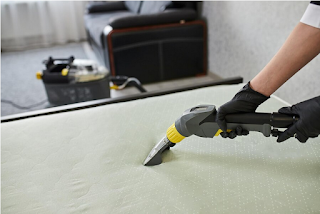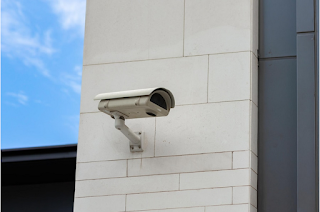How to Clean and Take Care of Your Mattress in Easy Steps
Your mattress cost you a lot of cash and is one of your greatest valuable things. So, it makes sense to
keep it clean and ready so that it lasts and keeps giving you peaceful sleep for years.
Mattresses could easily become homes for allergens and asthma triggers like dust mites, dirt, mold,
mildew, dead skin, and many other things. Cleaning the mattress regularly not only makes it last longer
but also stops allergies and other illnesses from spreading.
The good news is that it's not too hard to clean a mattress. Here, we'll talk about how to take care of
your mattress so that it stays healthy and lasts a long time.
1. Tools for Cleaning a Mattress
For a good job of cleaning a mattress, you'll need the following things:
Dish soap or enzyme cleaner
Baking soda
Laundry detergent
Cold-water
Cloths for cleaning
A vacuum
Make sure that when you use soaps and other cleaning products, you don't use anything too harsh that
could hurt the soft fabric of the mattress. You can also use things that smell sweet.
2. Clean the Sheets
First, wash your sheets, mattress covers, and pillowcases for hygiene. Sweat, body oils, and dirt
naturally build up, and if you don't clean them often, they can get deep into the mattress over time.
The best way to get rid of dust mites is to wash bedding in hot water. Pillows can also be washed,
depending on what kind they are (be sure to follow the instructions from the manufacturer).
In general, you should wash your sheets and pillowcases once a week or more often if your pets sleep
with you. People who live in warmer places or who get seasonal allergies may also need to wash more
often at certain times of the year.
But things that don't come in close contact with sleepers don't need to be washed as often.
So, wash your comforters and blankets every two to three months, your pillow inserts every four to six
months, and your duvet covers once or twice a month.
3. Get the Mattress Clean
Using the upholstery attachment on your vacuum, gently vacuum the top of the mattress, as well as the
sides and seams, to get rid of every last bit of dust and dirt that might be hiding there.
Make sure to also clean under the bed. If the mattress has two sides, flip it over.
If it only has one side, turn it from head to toe and vacuum both sides.
4. Getting Rid of Stains with Stain Remover
Now it's time to look for spots and stains on the surface of the mattress that need to be cleaned. There
are three main rules to follow when getting rid of stains:
As soon as the stains happen, get them out.
Check the label on the mattress before you start cleaning it.
First, put a small amount of the solution on a small part of the stain to see if it will hurt the mattress.
Make sure not to soak your mattress, especially if it is made of poly-foam or memory foam.
Read on for tips on how to figure out which stain remover is best for the type of stain and the type of
mattress. Soak a clean white cloth in the cleaner and use it to rub the stain.
Then, use a different cloth that has been wet with cold water and keep blotting until the stain is gone.
Make sure to use as little water and solution as you can.
This method can be used to get rid of stains from sweat, blood, vomit, urine, and other things.
5. Sprinkle Baking Soda
Once the visible stains are gone and the mattress is completely dry, sprinkle a thin layer of baking soda
over the whole surface and leave it for at least a few hours.
Baking soda can help break down acids, soak up moisture, and get rid of smells. If you can, open the
windows to let air and sunlight in.
6. Vacuum Again
Once the baking soda has worked its way through, you should give it a good vacuuming.
If the headboard is made of fabric, you should also vacuum it.
7. Turn and Do It Again
Now that the top side of the mattress is clean and free of stains, flip it over and do steps 4 through 6
again so that both sides are clean and fresh.
Even though the bottom probably won't have any stains you can see, it can still get dusty and dirty.
Depending on the material of the mattress and the kind of stain, you may need to analyze the situation
and find a good way to clean the mattress. Flipping the mattress should be done on a regular basis,
whether or not you are doing a deep clean.
Since mattresses are becoming more specialized, the best thing you can do is check with the
manufacturer about the model.
8. Ways to Keep the Bed Safe
Once the mattress is clean and dry, it's time to put a cover on it. Most of the time, it's best to use a
mattress protector (preferably one that's waterproof) because it protects the mattress from spills and
keeps dirt and germs from building up, making it much easier to clean.
9. Use a Sheet that Fits Your Bed
When fitted sheets and mattress encasement are used to cover mattresses and box springs, dust and
other allergens can't build up on them.
The above steps may soon become a real chore for the average family. To get the best results, it's best
to hire professional mattress cleaners.
Routine care and maintenance of the mattress is a surefire way to keep it in good shape and make it
last longer, so taking these steps is a good investment.
Here are the top 10 sump pumps, as well as a buying guide.




Comments
Post a Comment